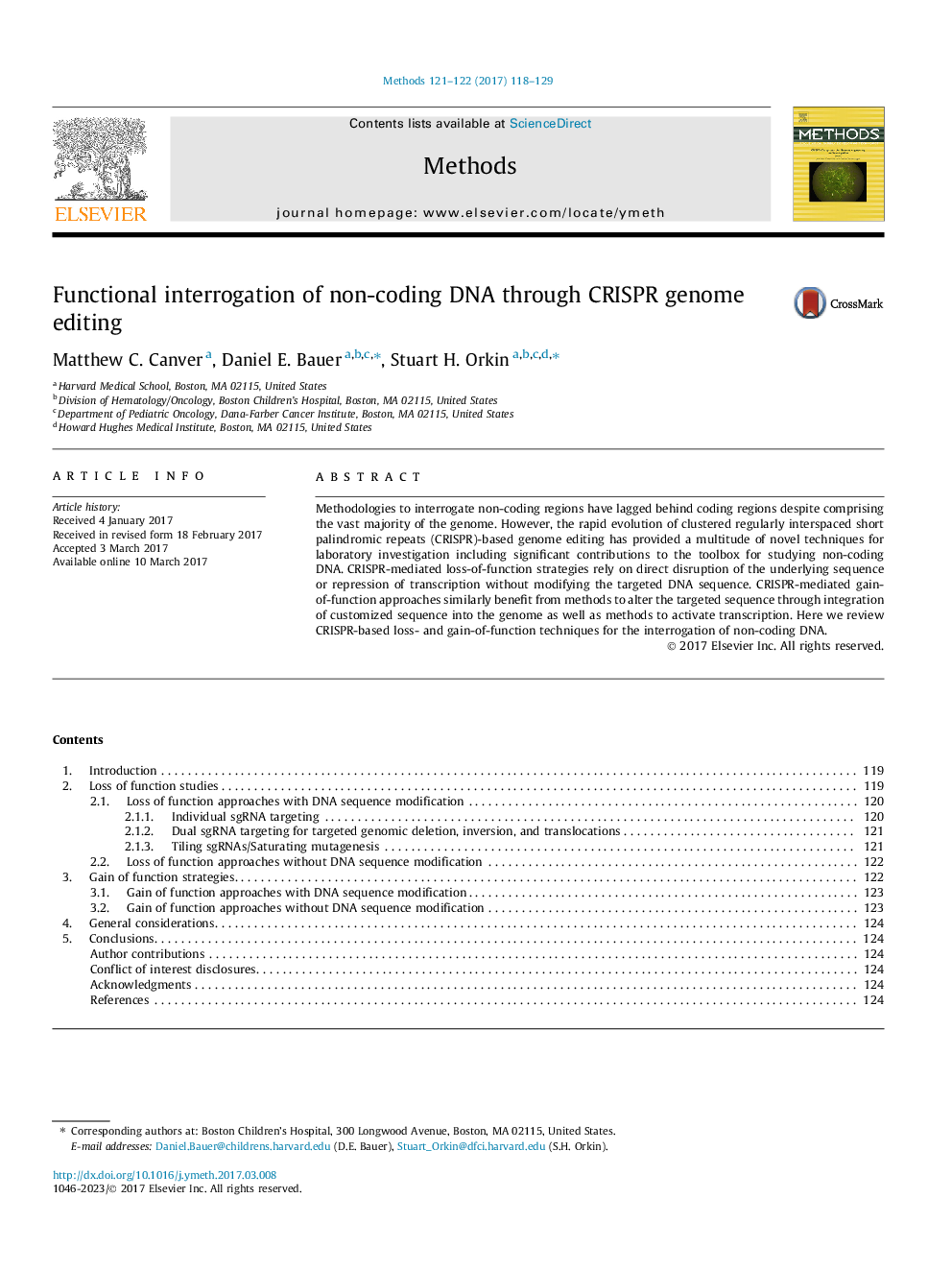| Article ID | Journal | Published Year | Pages | File Type |
|---|---|---|---|---|
| 5513604 | Methods | 2017 | 12 Pages |
â¢Multiple CRISPR-based methods exist to study non-coding DNA.â¢CRISPR-based methods can be used for gain- and loss-of-function studies.â¢CRISPR-based methods can be used for transcriptional activation or repression.
Methodologies to interrogate non-coding regions have lagged behind coding regions despite comprising the vast majority of the genome. However, the rapid evolution of clustered regularly interspaced short palindromic repeats (CRISPR)-based genome editing has provided a multitude of novel techniques for laboratory investigation including significant contributions to the toolbox for studying non-coding DNA. CRISPR-mediated loss-of-function strategies rely on direct disruption of the underlying sequence or repression of transcription without modifying the targeted DNA sequence. CRISPR-mediated gain-of-function approaches similarly benefit from methods to alter the targeted sequence through integration of customized sequence into the genome as well as methods to activate transcription. Here we review CRISPR-based loss- and gain-of-function techniques for the interrogation of non-coding DNA.
